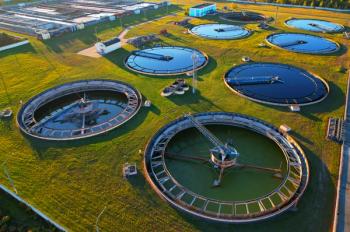Key Points
- A recent study revealed that gibberellin acid (GA₃) levels fluctuate in coordination with key developmental stages in cauliflower—specifically during seedling elongation, curd initiation, and stalk elongation (bolting). Elevated GA₃ levels at these stages suggest a regulatory role in plant growth and phase transitions under ambient temperature conditions.
- Researchers observed significant variation in GA₃ concentrations across different cauliflower maturity groups (early to late) and time points, indicating that both genetic background and environmental cues shape hormone-mediated developmental responses.
- High-performance liquid chromatography (HPLC) was used to quantify GA₃ levels across plant tissues and stages. The study emphasized the need to further explore other gibberellins and their interplay with additional plant hormones and gene expression pathways to fully understand the molecular mechanisms driving developmental transitions.
Researchers at the ICAR-Indian Agricultural Research Institute (New Delhi, India) investigated the endogenous levels of gibberellins (GAs) at six different developmental stages and four time points in four varieties of cauliflower growth using high-performance liquid chromatography (HPLC). The goal of the research was to explores the role of GA3 in temperature resilience and its implications for advancing cauliflower improvement for broader production plasticity. The research team also explored the association between endogenous GA3 dynamics and phenological transitions.
The study included four maturity groups of cauliflower—namely, early, mid-early, and mid-late groups indigenous to India, as well as the late or snowball group. Levels of GA3 were determined using high-performance liquid chromatography (HPLC). A paper based on this work was published in PLOS One (1).
It is necessary for plants to transition from the vegetative to the reproductive phase and produce flowers and seeds for successful reproduction and genetic continuation. Floral transition depends on the plant’s response to internal (endogenous) and external (environmental) cues (1). GAs promote flowering by upregulating the expression of floral integrators, as well as govern many processes throughout the plant life cycle, including seed germination, stem and leaf growth, trichome development, flowering time, and vegetative and reproductive development (2–4). Conversely, early flowering is prompted by exogenous GAs or by elevated endogenous GA levels and enhanced GA signaling (5). GA3, also known as gibberellic acid, is a very potent hormone that naturally occurs in plants and controls their development. It is involved in the stimulation of rapid stem and root growth, and the increase of seed germination rates (6).
Cauliflower originated in the Mediterranean region and spread to different parts of the world, including India. Changes resulting from the plant’s adaptation, affected mostly by the genomic regions associated with developmental transitions has led to the evolution of different ecotypes of cauliflower, such as Originals, Northern, Cornish, Roscoff, Angers, Snowball, and tropical or Indian cauliflower (7). The edible portion of cauliflower, known as the curd, is composed of arrested prefloral fleshy inflorescence meristems, which marks the vegetative-to-generative transition in two phases. In the first phase, the transition from vegetative to inflorescence meristem occurs, to be followed by elongation of curd, known as bolting, under congenial conditions, which leads to the transition from inflorescence meristem to floral primordium. These developmental transitions, however, rely on genotypic responses to environmental conditions (8).
Four varieties of cauliflower, each representing one of four thermosensory-based maturity groups (early, mid-early, mid-late, and late), were used in the study. Analysis was conducted using HPLC, with separation achieved on a C18 column maintained at 30 °C. The mobile phase consisted of acetonitrile: water (26:74; v/v, pH 3.5) filtered through a PVDF membrane filter. The flow rate was maintained at 0.8 mL/min, and a 20 µL sample of the extract was injected into the column. The wavelength for the determination was 206 nm for UV monitoring and 360 nm for recording. GA3 served as an external standard (0.1, 0.5, 1, 5 and 10 mg/L) for identifying the hormone in plant samples (1).
The researchers reported confirmation of the impact of developmental transitions on changes in endogenous GA3, indicating the putative role of GA3 in governing these transitions. A higher GA3 content at the bolting stage suggested an associated role of GA3 in stalk elongation during bolting. GA3 was also detected at a higher concentration in curd and stalk tissues at the full curd and bolting stages, respectively. Fluctuations at different time points followed the corresponding developmental stages of the plant. The maturity groups exhibited significant variation in GA3 content during both developmental transitions and time points (1).
The elevated levels of endogenous GA3 during the seedling stage, curd initiation stage, and bolting stage, according to the researchers, suggest the potential associations of internal GA3 with seedling elongation, curd induction, and stalk elongation associated with bolting. The time-point results of GA3 content corresponded with the stage of development. To determine the role of phytohormones in developmental transitions, the researchers recommended that the levels of other endogenous GAs from both the 13-hydroxylation pathway and the non-13-hydroxylation pathway be explored, as it remains unclear whether these pathways are active in cauliflower (9). Additionally, examining their interactions with other plant hormones is important. Hormonal pathways are interconnected through a complex network of interactions and feedback circuits, which collectively determine the overall effects of individual hormones (10). To uncover the molecular mechanisms underlying the influence of GAs on developmental stages, the researchers state that expression studies of genes related to the GA pathway and the ambient temperature pathway are also imperative (1).
References
- Luhana, S.; Singh, S.; Nagar, S. et al. Understanding the Changes in Endogenous GA3 in Relation to Developmental Transitions in Cauliflower (Brassica oleracea var. botrytis L.). PLoS One 2025, 20 (6), e0321599. DOI: 10.1371/journal.pone.0321599
- Cheng, J. Z.; Zhou, Y. P.; Lv, T. X. et al. Research Progress on the Autonomous Flowering Time Pathway in Arabidopsis. Physiol. Mol. Biol. Plants 2017, 23 (3), 477-485. DOI: 10.1007/s12298-017-0458-3
- Moon, J.; Suh, S. S.; Lee, H. et al. The SOC1 MADS-Box Gene Integrates Vernalization and Gibberellin Signals for Flowering in Arabidopsis. Plant J. 2003, 35 (5), 613-623. DOI: 10.1046/j.1365-313x.2003.01833.x
- Achard, P.; Herr, A.; Baulcombe, D. C. et al. Modulation of Floral Development by a Gibberellin-Regulated MicroRNA. Development 2004, 131 (14), 3357-3365. DOI: 10.1242/dev.01206
- Jung, H.; Jo, S. H.; Jung, W. Y. et al. Gibberellin Promotes Bolting and Flowering via the Floral Integrators RsFT and RsSOC1-1 under Marginal Vernalization in Radish. Plants (Basel) 2020, 9 (5), 594. DOI: 10.3390/plants9050594
- Gibberellic acid. Wikipedia. https://en.wikipedia.org/wiki/Gibberellic_acid (accessed 2025-06-25)
- Rakshita, K. N.; Singh, S.; Verma, V. K. et al. Agro-morphological and Molecular Diversity in Different Maturity groups of Indian Cauliflower (Brassica oleracea var. botrytis L.). PLoS One 2021, 16 (12), e0260246. DOI: 10.1371/journal.pone.0260246
- Swarup, V.; Chatterjee, S. S. Origin and Genetic Improvement of Indian Cauliflower. Econ. Bot. 1972, 26 (4), 381-393.
- Duclos, D. V.; Björkman, T. Gibberellin Control of Reproductive Transitions in Brassica oleracea Curd Development. J. Am. Soc. Hortic. Sci. 2015, 140 (1), 57-67. DOI: 10.21273/JASHS.140.1.57
- Vanstraelen, M.; Benková, E. Hormonal Interactions in the Regulation of Plant Development. Annu Rev Cell Dev Biol.2012, 28 (1), 463-487. DOI: 10.1146/annurev-cellbio-101011-155741






